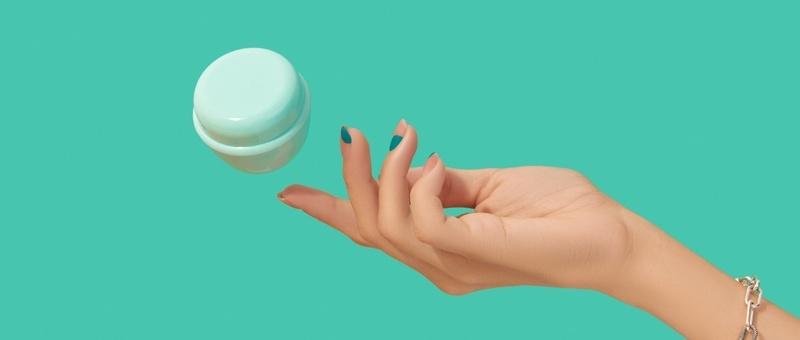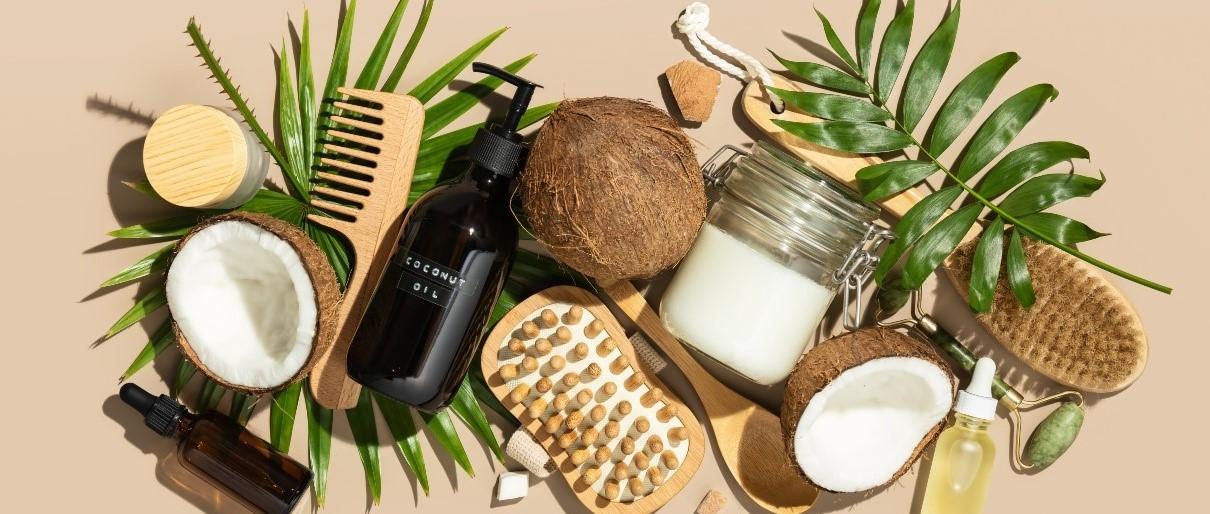
What is skinimalism, and is it good for your skin?
Peer reviewed by Dr Colin Tidy, MRCGPAuthored by Victoria RawOriginally published 7 Oct 2025
- DownloadDownload
- Share
Skinimalism may sound like a mouthful, but the idea behind this skincare trend is refreshingly simple. It’s all about streamlining your routine to focus on the essentials. In this article, we’ll explore what skinimalism is all about, what an expert has to say, and how you can decide whether it’s the right approach for you.
In this article:
In today’s world, countless skincare products are readily available, each promising to enhance suppleness, smoothness, and overall skin quality. Some even claim to reverse the signs of ageing - reducing wrinkles and restoring a youthful, radiant glow. But is indulging in complex, multi-step skincare routines the healthiest way to maintain or improve your skin’s health?
Continue reading below
What is skinimalism?
Skinimalism is exactly what the name implies - a move towards a streamlined skincare routine that emphasises skin health rather than chasing perfection.
Dr Hazel Parkinson, GP and founder of Dr Hazel Skin Solutions, Long Itchington, UK explains that skinimalism is about simplifying your facial routine to just a few high-quality, well-chosen items.
“These should be products that truly serve your skin’s needs, rather than layering ten steps and hoping for the best,” she advises. “Skinimalism encourages us to embrace natural texture, healthy function, and long-term support rather than instant - but sometimes irritating - results.”
Parkinson says that traditional skincare routines generally involve multiple active ingredients - layering serums and creams which sometimes compete, or worse, clash with each other. Skinimalism, on the other hand, focuses on doing less, but better.
“It’s not about neglecting your skin,” she says. “It’s about choosing targeted, multitasking products that respect your skin barrier and avoid overwhelming it.”
For the best results, Parkinson recommends choosing skincare products that combine the following:
Antioxidants.
Hydrators.
Gentle actives - such as serums containing niacinamide, hyaluronic acid, and peptides.
What are the benefits of skinimalism?
One of the biggest benefits of skinimalism is that it helps protect and maintain your skin’s natural barrier, reducing irritation and sensitivity.
Parkinson says that this is particularly important if you have sensitive or menopausal skin.
“As oestrogen declines, your skin becomes thinner, drier, and more prone to irritation and barrier dysfunction,” she explains. “Overuse of strong actives - such as exfoliating acids or retinoids - can exacerbate these issues. Skinimalism helps reduce this burden and allows the skin to repair and rebalance.”
The feel-good benefits of skinimalism
Skinimalism may offer benefits beyond your skin, potentially enhancing your overall sense of wellbeing.
Parkinson explains that with social media and endless marketing messages, it’s easy to feel overwhelmed and unsure about the 'perfect' skincare routine.
“Simplifying your routine can feel incredibly liberating,” she says. “It removes the stress and second-guessing. And there’s something quite empowering about backing away from the idea that we need a 12-step routine to be worthy or ‘glowing’”.
Another good thing about skinimalism is that it helps cut down on products, which is better for the environment.
“Fewer products mean less waste, less packaging, and less strain on your budget,” she says. “It’s a more sustainable way to care for your skin and the planet, which resonates with many people who are trying to make more conscious choices.”
Continue reading below
Is a skinimalist skincare routine suitable for everyone?
Most people can benefit from a balanced, barrier-friendly routine, but skinimalism isn’t necessarily for everyone.
Parkinson advises that people who have acne or pigmentation might still rely on specific ingredients - such as retinoids or azelaic acid.
“However, they don’t necessarily need six other steps alongside them,” she says.
For people with specific skin conditions, she explains that you don’t have to ignore your concerns - you just need to treat them intelligently.
Skinimalism for common skin conditions
If you have a skin condition and want to know how to adopt a skinimalist routine, Parkinson offers skincare advice for common concerns.
Acne
If you have acne, a simplified routine can often help soothe your symptoms.
Parkinson explains that overuse of harsh exfoliants, stripping cleansers, or layering multiple actives can disrupt your skin’s barrier and trigger more breakouts.
She advises: “A skinimalist approach with a gentle cleanser, non-comedogenic moisturiser, and a targeted active - such as azelaic acid, salicylic acid, or a retinoid - can be far more effective, and better tolerated, than a 10-step routine. Less can truly be more here."
Eczema/atopic dermatitis
According to Parkinson, this is an area where skinimalism can be essential.
“Eczema-prone skin often has a compromised barrier by default,” she says. “A minimalist routine that prioritises barrier repair, fragrance-free emollients, ceramide-rich moisturisers, and minimal actives helps avoid flares.
“Any actives - such as niacinamide or azelaic acid - should be introduced cautiously, ideally with guidance from a professional.”
Rosacea
Rosacea-prone skin is sensitive and can flare up with overuse of products - especially anything perfumed, exfoliating, or highly active. For this reason, Parkinson recommends keeping your routine minimal.
She says: “Think soothing cleanser, anti-inflammatory moisturiser, SPF, and a single calming active - such as azelaic acid.
“This approach is often far more successful than layering trendy ingredients. Menopausal rosacea can also be particularly tricky, so barrier support and anti-inflammatory ingredients are key.”
Hyperpigmentation
People with hyperpigmentation are especially vulnerable to overcomplicating their skin routine.
Parkinson explains that this often means layering vitamin C, exfoliants, retinoids, tranexamic acid, and other actives.
“In reality, consistent use of a well-chosen active - for example, retinoid, azelaic acid, niacinamide, arbutin or hydroquinone - plus daily SPF, will do far more than a cluttered regime,” she says. “Skinimalism doesn't mean ignoring pigmentation concerns, it means treating them intelligently and patiently.”
Menopausal skin
While not a skin condition, menopause can mean your skin needs a little extra care and targeted attention.
“As your hormone levels shift, you may need richer moisturisers and ingredients to support collagen,” Parkinson advises. “These can include vitamin C, peptides or retinoids - and occasional in-clinic support to maintain skin health. But even then, it’s about thoughtful layering, not mindless product stacking.”
How to do a skinimalism regimen
For people with healthy skin and no specific conditions, Parkinson offers expert tips on how to begin a skinimalist routine.
Key steps and products to include are:
A gentle cleanser - ideally pH-balanced.
A multi-tasking serum - with ingredients such as niacinamide, Vitamin C, ceramides, or peptides.
A moisturiser - tailored to skin type.
Daily broad-spectrum SPF.
Optional: You can add a retinoid or exfoliant, using it just 1–2 times per week if needed.
If you’re unsure which products are essential and which are optional, focus on your skin’s unique needs and tolerance.
“If your skin is dry or reactive, focus on hydration and barrier repair,” Parkinson advises. “If it’s oily or congested, you may benefit from actives such as salicylic acid, but not on top of ten other products.
“If it’s menopausal and dull, you might want a retinoid, but again, balanced with hydrating and calming ingredients.”
Skinimalism by age group
Parkinson notes that a skinimalist routine should vary depending on your age, lifestyle, and what you want to achieve with your skin.
She explains: “A 25-year-old with resilient skin may be able to tolerate more actives, while a 50-something navigating menopause may need more support around hydration, barrier repair, and collagen stimulation. A night-shift worker or gym-goer might also need tweaks to accommodate increased oil production or environmental exposure.”
If you’re moving from a multi-step routine to a minimalist approach, ease into it by eliminating one or two products at a time, allowing 2-4 weeks for your skin to adapt.
“Watch how your skin responds,” Parkinson suggests. “Often you’ll be surprised at how calm and balanced it becomes when given the chance to breathe. If in doubt, speak to a professional who can help streamline your routine safely.”
Patient picks for Skin rashes

Skin, nail and hair health
The best foods and nutrients to eat for healthy skin
It seems we go from fighting teenage blemishes, straight on to battling wrinkles. However, incorporating nutrient-rich foods into your diet can benefit your skin at any age. Here we take a look at some of the key nutrients for healthy skin and what you should be adding to your weekly shop to get them.
by Victoria Raw

Skin, nail and hair health
Is coconut oil good for your hair?
Coconut oil can offer a range of benefits for your hair. You've probably heard of it being used on the skin, but many people use it to help with hair growth or detangling. We explore the possible benefits and how best to include coconut oil in your haircare routine.
by Victoria Raw
Article history
The information on this page is peer reviewed by qualified clinicians.
Next review due: 7 Oct 2025
7 Oct 2025 | Originally published
Authored by:
Victoria RawPeer reviewed by
Dr Colin Tidy, MRCGP

Ask, share, connect.
Browse discussions, ask questions, and share experiences across hundreds of health topics.

Feeling unwell?
Assess your symptoms online for free